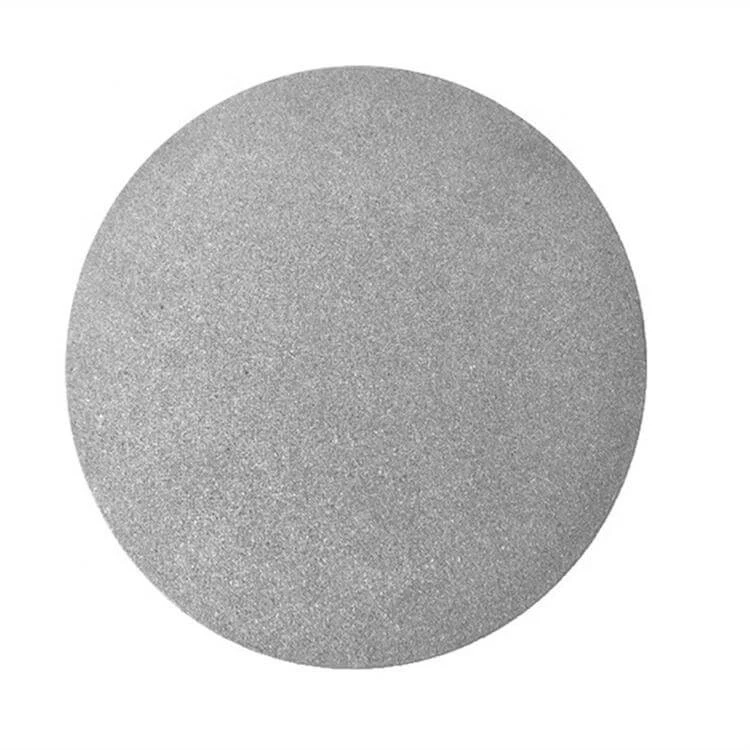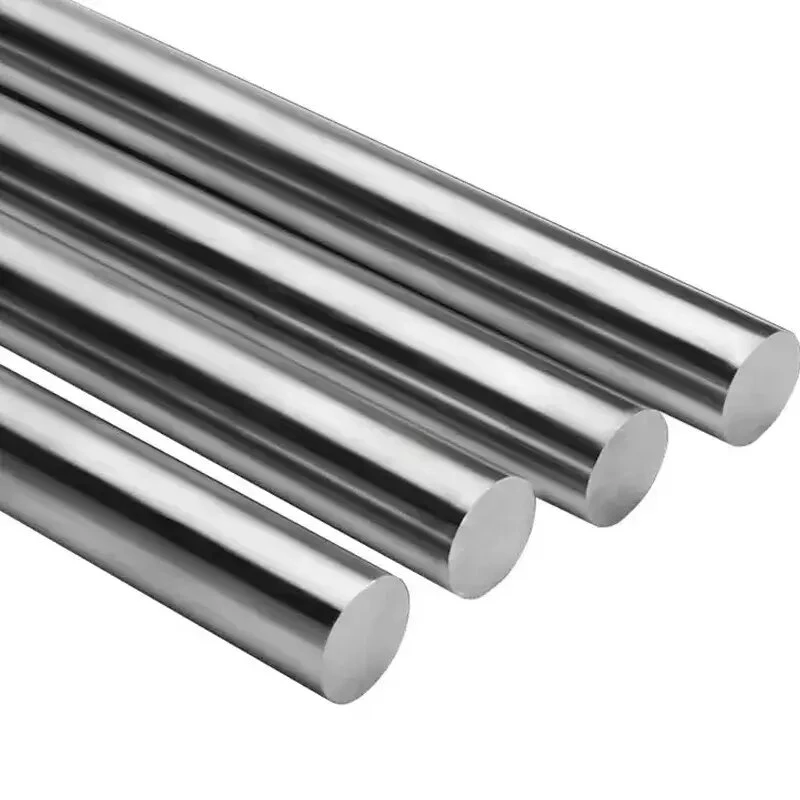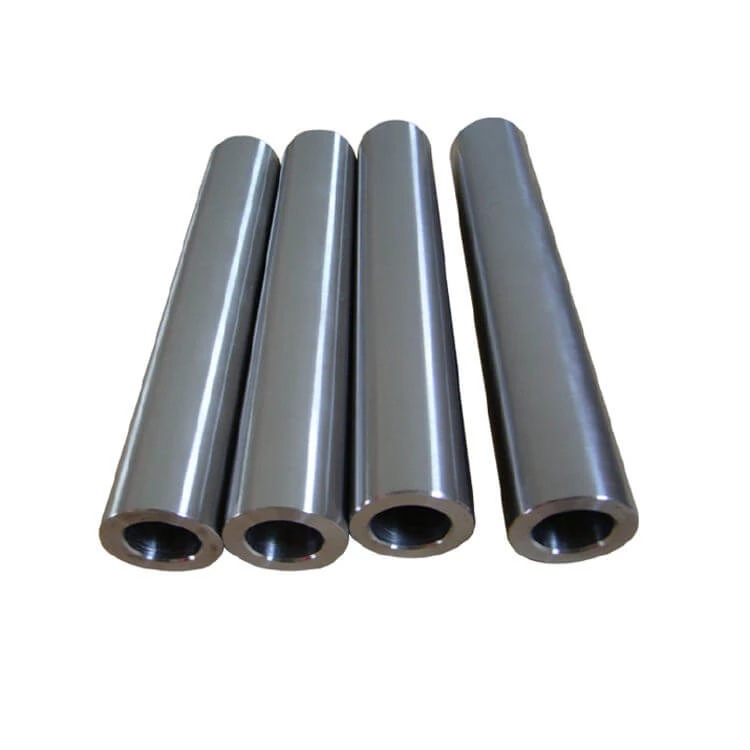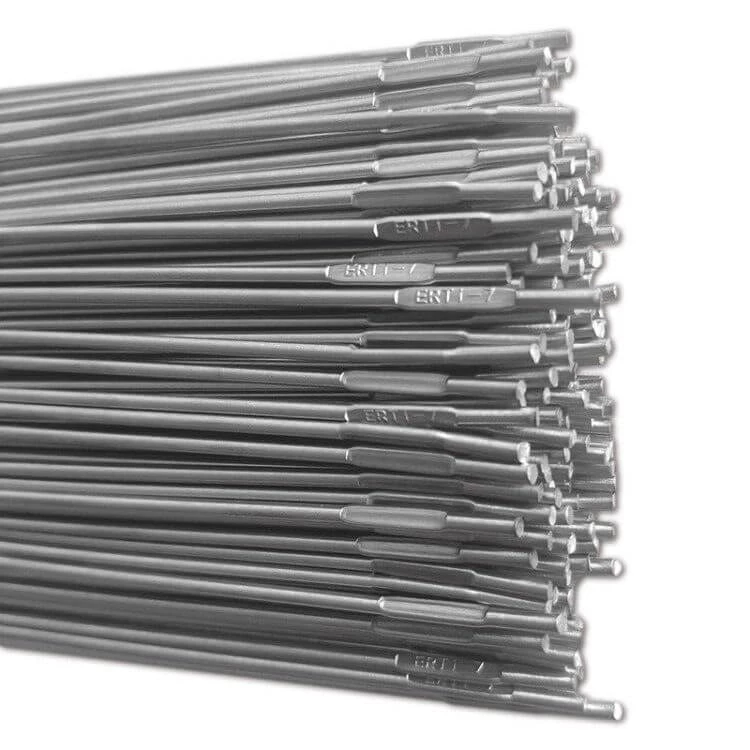Klassificering af varmevekslere
Heat Exchanger
Heat exchangers play an important role in many industrial sectors such as petroleum, chemical industry, power, light industry, food and atomic energy. According to statistics, in petroleum refining and petrochemical plants, heat exchangers account for about 40% of the total weight of process equipment and about 20% of investment.
Classified by heat transfer method: heat exchangers can be divided into partition wall heat exchangers, regenerative heat exchangers, fluid connection indirect heat exchangers, direct contact heat exchangers, and multiple heat exchangers;Classified by use: it is divided into heaters, preheaters, superheaters, and evaporators;
According to the structure, it can be divided into: floating head heat exchanger, fixed tube-sheet heat exchanger, U-shaped tube-sheet heat exchanger, plate heat exchanger, etc.
1. Floating head heat exchanger
Advantages: Eliminate temperature difference stress, can work under high temperature and high pressure, generally the temperature is less than or equal to 450 degrees, and the pressure is less than or equal to 6.4 MPa; the heat exchanger tube bundle can be pulled out for cleaning, and can be used in occasions where scaling is easy or where the tube side is easy to corrode .
Disadvantages: The structure is complicated, and the small floating head is prone to internal leakage. The consumption of metal materials is large, and the cost is about 20% higher than that of ordinary heat exchangers.
2. Shell and tube heat exchanger
Advantages: simple structure, compact, cheap cost;
Disadvantages: the outside of the tube cannot be cleaned mechanically, and there is a large temperature difference stress between the tube wall and the shell wall;
3. U-shaped tube heat exchanger
Advantages: the tube bundle can be freely expanded and contracted, there is no thermal stress between the tube shells, the tubes are double tubes, the process is long, the heat exchange effect is good, and the pressure bearing capacity is strong; the tube bundle can be pulled out from the shell, which is convenient for maintenance and cleaning, and the structure is simple and the cost is cheap;
Disadvantages: It is inconvenient to clean inside the tubes, it is difficult to replace the tubes in the middle of the tube bundle, the distribution of the tubes is not compact enough, the fluid in the shell side is easy to short circuit and affects the heat transfer in the shell side, and the tubes will be bent and thinned, so the straight tube part needs thicker tubes, which limits it The heat exchanger is only suitable for occasions where the temperature difference between the tube and shell side is large, or the shell side medium is easy to scale and the tube side medium is clean, high temperature, high pressure, and strong corrosion;
4. Immersion coil heat exchanger
With the serpentine tube as the heat transfer element, according to the different cooling methods of the fluid outside the tube, the serpentine heat exchanger is divided into immersion type and spray type.
Advantages: simple structure, convenient manufacturing, installation, cleaning, inspection and maintenance, easy to prevent corrosion, high pressure bearing, low cost, especially suitable for high-pressure fluid cooling and condensation.
Disadvantages: The equipment is bulky, the consumables are large, and more metal is required for unit heat transfer;
5. Spray coil heat exchanger
Advantages: the heat transfer effect is better than that of the immersion type, the heat transfer area is large and can be changed, and the maintenance and cleaning are convenient;
Disadvantages: uneven spraying, mainly used for cooling the fluid in the pipe, often installed in the outdoor air circulation place;
6. Tube heat exchanger
Advantages: large heat transfer area, high heat transfer efficiency;
Disadvantages: Maintenance, cleaning and disassembly are more troublesome, and it is easy to cause leakage at the detachable connection;
7. Spiral plate heat exchanger
Advantages: good heat transfer efficiency, stable operation, multiple units can be used, high heat transfer efficiency, strong operation reliability, small resistance, etc.;
Disadvantages: high requirements for welding quality, difficult maintenance, heavy weight, poor rigidity, difficult transportation and installation;
8. Heat exchanger with compensation ring
When the fluid is exchanging heat at high temperature, the thermal stress on the shell side of the tube is relatively large, and the reinforcing ring (or expansion joint) can eliminate the thermal stress. It is suitable for occasions where the temperature difference between the two fluids is not greater than 70°C and the pressure of the shell-side fluid is not higher than 600kPa.
9. Heat pipe heat exchanger
Features: high heat transfer efficiency, compact structure, small heat exchange fluid resistance loss, flexible shape change, corrosion resistance, and strong environmental adaptability.
10. Jacket heat exchanger
Advantages: simple structure, convenient manufacturing and transportation;
Disadvantages: the heat transfer area is limited, the heat transfer coefficient is not high, and the agitator or coil can be added to improve the heat transfer coefficient;
11. Plate-fin heat exchanger
Advantages: compact and light structure, high heat transfer coefficient, strong applicability;
Disadvantages: high manufacturing requirements, complex process, easy to block, not corrosion resistant, difficult to maintain, so it is only suitable for cleaning liquids;
Heat exchangers are widely used in electric power metallurgy, petrochemical and other industrial production, among which the demand for heat exchangers in the petrochemical field accounts for 30% of the market share, followed by electric power metallurgy, shipbuilding industry and machinery industry, accounting for 17%, 9% and 8%.
Heat exchangers are widely used in heat exchange, concentration, sterilization, condensation, etc. , evaporation and other processes. For example, milk sterilization, juice treatment, brewery, wastewater treatment and so on. It is also widely used in heating, cooling, sterilization, evaporation, condensation, heat addition, etc. in mining, petroleum, China, electric power, medicine, food, textile, paper and central heating industries.
Titanium Heat Exchanger Features
Thetitanium.html> titanium heat exchanger is a heat exchange device made of high-quality titanium tubes that transfers part of the heat of the hot fluid to the cold fluid.
First of all, let's take a look at the metal "titanium and titanium alloy": the density of titanium is 4.51g/cm3, which is higher than aluminum and lower than steel, copper, and nickel, but its specific strength ranks first among metals. Corrosion resistance Titanium is a very active metal, its equilibrium potential is very low, and its thermodynamic corrosion tendency is large in the medium. But in fact titanium is very stable in many media, such as titanium is corrosion-resistant in oxidizing, neutral and weakly reducing media. This is because titanium has a great affinity with oxygen. In the air or in an oxygen-containing medium, a layer of dense, strong adhesion, and high inert oxide film is formed on the surface of titanium, which protects the titanium substrate from corrosion. Even due to mechanical wear, it will quickly heal or regenerate itself. This indicates that titanium is a metal with a strong tendency to passivate. The titanium oxide film always maintains this characteristic when the medium temperature is below 315°C. In order to improve the corrosion resistance of titanium, surface treatment technologies such as oxidation, electroplating, plasma spraying, ion nitriding, ion implantation and laser treatment have been studied, which have enhanced the protective effect on the oxide film of titanium and obtained the desired corrosion resistance. Effect. A series of corrosion-resistant titanium alloys such as titanium-molybdenum, titanium-palladium and titanium-molybdenum-nickel have been developed to meet the needs of metal materials in the production of sulfuric acid, hydrochloric acid, methylamine solution, high-temperature wet chlorine gas and high-temperature chloride. Titanium-32 molybdenum alloy is used for titanium castings, titanium-0.3 molybdenum-0.8 nickel alloy is used for the environment where crevice corrosion or pitting corrosion often occurs, or titanium-0.2 palladium alloy is used for parts of titanium equipment, all of which have been well used Effect. Good heat resistance The new titanium alloy can be used for a long time at a temperature of 600°C or higher. Good low temperature resistance Titanium alloy TA7 (Ti-5Al-2.5Sn), GR5 (Ti-6Al-4V) and Ti-2.5Zr-1.5Mo are represented by low-temperature titanium alloys, whose strength increases with the decrease of temperature, but Plastic changes are small. It maintains good ductility and toughness at low temperatures of -196-253°C, avoids metal cold brittleness, and is an ideal material for low-temperature containers, storage tanks and other equipment.
The titanium heat exchanger is made of high-quality titanium tubes. In terms of physical properties, titanium tubes have many advantages such as light weight and superior mechanical properties. Titanium has high strength, and the tensile strength of pure titanium can reach up to 180kg/mm2. Some steels are stronger than titanium alloys, but the specific strength (the ratio of tensile strength to density) of titanium alloys exceeds that of high-quality steel. In addition, titanium alloys have good heat resistance, low temperature toughness and fracture toughness.
chemical properties
In terms of chemical properties, titanium exhibits good stability and good corrosion resistance in various industrial solutions. Industrial pure titanium is an excellent material for refrigeration equipment accessories. Industrial pure titanium can be widely used in organic compounds, alkaline solutions, and salt solutions and other media, and is not easy to react with them, and has excellent corrosion resistance; pure titanium has low concentration of inorganic acids such as hydrochloric acid, sulfuric acid, nitric acid, etc Good corrosion resistance; however, with the increase of medium concentration and working temperature, industrial pure titanium is easy to chemically react with the above-mentioned inorganic acids, which reduces the corrosion resistance of titanium. Therefore, attention should be paid to the concentration and Operating temperature.
Industrial pure titanium has good corrosion resistance to formic acid, oxalic acid, lactic acid and other organic acids at room temperature.
With various excellent properties of industrial pure titanium, titanium heat exchangers are widely used in various seafood farming, seawater heat exchange, brine heat exchange, chemical industry, food, medicine, metallurgy, refrigeration, light industry, electroplating industry, aluminum oxidation tank, Salt making, paper making, ultrasonic, electronic communication, central heating and other industries and fields
Common classification: fixed tube sheet type
In the fixed tube-sheet heat exchanger, the tube sheets at both ends are directly welded to the shell. It is mainly composed of shell, tube sheet, tube bundle, head and other main components. The shell is provided with a tube bundle, and the two ends of the tube bundle are fixed on the tube sheet by welding, expansion joint or expansion welding, and the outer periphery of the tube sheet and the head flange are fastened with bolts. The fixed tube-sheet heat exchanger has the advantages of simple structure, low cost, easy manufacture, and convenient cleaning and maintenance of the tube side, but it is difficult to clean the shell side, and there is a temperature difference stress after the tube bundle is manufactured. When there is a large temperature difference between the heat exchange tube and the shell, an expansion joint should be provided on the shell.
Floating head type: One end of the floating head heat exchanger is fixed between the shell and the tube box, and the other end of the tube plate can move freely in the shell, that is, the thermal expansion of the shell and the tube bundle can be free. Therefore, there is no temperature difference stress between the tube bundle and the shell. Generally, the floating head is detachable, and the tube bundle can be drawn out and loaded freely. This structure of the floating head heat exchanger can be used in the working condition where there is a large temperature difference between the tube bundle and the shell. The cleaning and maintenance of the tube bundle and shell are relatively convenient, but its structure is relatively complicated, and the requirements for sealing are relatively high.
U-shaped tube type: U-shaped tube heat exchanger is a U-shaped heat exchange tube, and both ends are fixed on the same tube sheet. Since the shell and the heat exchange tubes are separated, the heat exchange tube bundle can expand and contract freely, and no temperature difference stress will be generated due to the temperature difference of the medium. The U-tube heat exchanger has only one tube sheet, no floating head, and a relatively simple structure. The tube bundle can be pulled out and loaded freely, which is convenient for cleaning. It has the advantages of a floating head heat exchanger. However, since the heat exchange tubes are made into U-shaped bends with unequal radii, the outermost heat exchange tube can be replaced after damage. Other tubes The damage can only be blocked. At the same time, compared with the fixed tube-sheet heat exchanger, because the heat exchange tube is limited by the bending radius, there is a gap in the center of the tube bundle, and the fluid is easily short-circuited, which affects the heat transfer effect.
Performance comparison Comparison items Floating coil heat exchanger Threaded tube heat exchanger Vortex hot film heat exchanger
Applicable medium type Steam, water Steam, water Weak corrosive chemical raw materials, steam, water
Medium parameter range Temperature: 0-150 degrees Temperature: 0-150 degrees Temperature: -40-400 degrees
Pressure: 0-1.0MPa Pressure: 0-1.6MPa Pressure: 0-10.0MPa
Thermal efficiency Thermal efficiency=92% Thermal efficiency=93% Thermal efficiency=96%
Anti-scaling performance Automatic descaling Manual descaling With anti-scaling function
Shock resistance and noise Larger vibration and loud noise Smaller vibration and low noise Weak vibration and low noise
Service life About 7 years About 10 years About 20 years
Maintenance Shutdown for maintenance, replacement of tube bundle Shutdown for maintenance, extubation and reexpansion No maintenance required
Titanium heat exchanger is a new type of heat exchanger composed of a series of corrugated metal plates. A thin rectangular channel is formed between the different sheets of the heat exchanger, and heat is exchanged through the half sheet. Compared with the traditional shell-and-tube heat exchanger, under the same flow resistance and pump power consumption, its heat transfer coefficient is much higher, and it has a tendency to replace the shell-and-tube heat exchanger within the applicable scale. Commonly used materials for titanium industrial plates include austenitic stainless steel, titanium and titanium alloys, nickel and nickel alloy cold-rolled plates, etc. Compared with the titanium heat exchanger, it has many advantages and has strong competitiveness in the market. It is mainly used in heat exchange systems such as chemical industry, petroleum, ship, and seawater purification.
advantage:
1. The titanium tube heat exchanger is made of industrial titanium precision. The purity of titanium reaches 99.7%. It has strong corrosion resistance, high electrical conductivity, and good heat resistance. It is suitable for processing and cooling low-concentration and acidic liquids; the surface is not easy to produce Oxide layer, no pollution to the medium, no scaling, not easy to block, and protect the environment.
2. The titanium heat exchanger is welded by technology, and the welding interface is tight and stable, and it is not easy to leak.
3. The titanium tube heat exchanger has a simple structure and high pressure resistance. It adopts an immersion structure and is installed in the container to be heat exchanged. It can be made into a single layer or multiple layers according to the container.
Scope of application:
Titanium heat exchangers have a variety of excellent properties of pure titanium, and are mostly used in a variety of seafood farming, seawater heat exchange, salt water heat exchange, chemical industry, food, metallurgy, refrigeration, light industry, electroplating, aluminum oxide T and other fields. Crude, salt, paper, electronic communications, central heating and other industries and fields.







